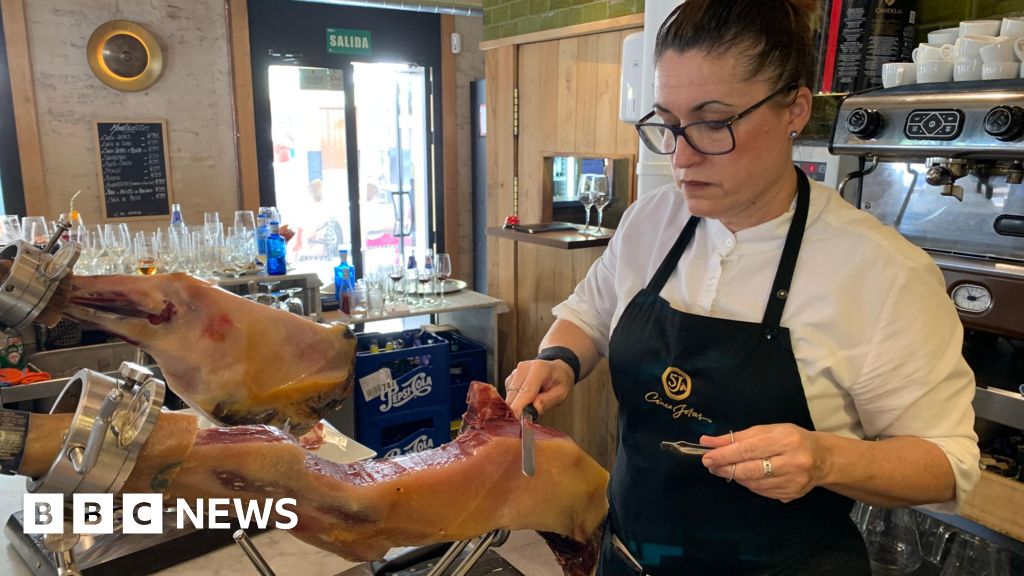- Local
What to know about Beyoncé’s Buffalo Soldiers T-shirt and their complicated role in h…
时间:2010-12-5 17:23:32 作者:National 来源:Local 查看: 评论:0内容摘要:Measles complications can include pneumonia, brain swelling and other respiratory or neurological complications, which can lead to death in 1 to 3 of every 1,000 children who are infected, according to the U.S. Centers for Disease Control and Prevention.Measles complications can include pneumonia, brain swelling and other respiratory or neurological complications, which can lead to death in 1 to 3 of every 1,000 children who are infected, according to the U.S. Centers for Disease Control and Prevention.
Star had a persistent cough after the February incidents and then developed pneumonia. It was believed that contents from his stomach were coming up through his nose, and Star breathing that matter back into his lungs caused the pneumonia.It’s possible Star ate a plastic bag when he was wandering downtown Anchorage, which could cause indigestion problems and chronic weight loss.

He was cured of pneumonia but developed a second bout.“He started to recover and then all of a sudden reversed himself, and we decided it was not possible to save him,” Whitehead said. Star was euthanized Tuesday, the same day the necropsy was conducted.Results won’t be known for a few weeks as to the possible cause of death or contributing factors, Whitehead said.

There has been a pet reindeer housed in downtown Anchorage since the 1950s. This particular Star was the seventh in the line to live with either Anchorage pioneers Oro and Ivan Stewart or Whitehead after he took over for the Stewarts in 2002.Star, which had his own Facebook page, constantly got visitors to his pen, attracting tourists and locals alike. He got daily walks in downtown Anchorage, was featured in parades, was visited by schoolchildren and even appeared on reality TV shows.

Haywood Park Community Hospital was the closest hospital for many in Brownsville, Tennessee, a rural city in the western part of the state.
Some residents believe it kept their loved ones alive. But— showed that creating a custom treatment doesn’t have to be prohibitively expensive. The cost was “not far off” from the $800,000-plus for an average liver transplant and related care, he said.
“As we get better and better at making these therapies and shorten the time frame even more, economies of scale will kick in and I would expect the costs to come down,” Musunuru said.Scientists also won’t have to redo all the initial work every time they create a customized therapy, Bhoopalan said, so this research “sets the stage” for treating other rare conditions.
Carlos Moraes, a neurology professor at the University of Miami who wasn’t involved with the study, said research like this opens the door to more advances.“Once someone comes with a breakthrough like this, it will take no time” for other teams to apply the lessons and move forward, he said. “There are barriers, but I predict that they are going to be crossed in the next five to 10 years. Then the whole field will move as a block because we’re pretty much ready.”
- 最近更新
- 2025-07-07 11:31:43Thu Jun 26, 2:10 PM EDTFDSSUTB44-35KC38-41
- 2025-07-07 11:31:43AOLThe best soundbars for seniors in 2025
- 2025-07-07 11:31:43ReutersFor first time, Webb telescope discovers an alien planet
- 2025-07-07 11:31:43Disposable vape ban begins - but will it have an impact?
- 2025-07-07 11:31:43Trump changes tune on Zelenskyy and Putin
- 2025-07-07 11:31:43how to dress and style yourself
- 2025-07-07 11:31:43The person worth waiting for, based on your birth month
- 2025-07-07 11:31:43Video Duration 02 minutes 08 seconds play-arrow02:08
- 热门排行
- 2025-07-07 11:31:43Courteney Cox's House Rules—Infuse Your Home with Order, Nice People, and Lovely Scents
- 2025-07-07 11:31:43The Brighter Side of NewsRare grasshopper species rediscovered after being lost for over 40 years
- 2025-07-07 11:31:43How to build an emergency fund on any budget
- 2025-07-07 11:31:43At least seven dead after two Russian bridges collapse
- 2025-07-07 11:31:435-Ingredient Sesame Tomato Salad
- 2025-07-07 11:31:43More than 1,000 migrants cross Channel in a day
- 2025-07-07 11:31:43Shop at Counter Culture Coffee
- 2025-07-07 11:31:43Warning after three bin lorry fires in one week
- 友情链接
- Save up to 80% on fashion during early Prime Day deals Two jailed for 30 years over 2019 Kenya hotel attack The Netherlands returns 119 stolen sculptures to Nigeria DR Congo and Rwanda to sign peace agreement on June 27 US bombs Iran: What we know about US strikes on Iran’s nuclear facilities UN warns of starvation in ‘hunger hotspots’ The 26 best sales this weekend DR Congo and Rwanda to sign peace agreement on June 27 Wagner vs Africa Corps: The future of Russian paramilitaries in Mali US strikes Iran in ‘Operation Midnight Hammer’ India says it will ‘never’ restore Indus Waters Treaty with Pakistan Photos: Kenyan police shoot bystander at close range during latest protests Save up to 80% on fashion during early Prime Day deals Kenya police officer arrested over blogger’s death in custody DR Congo and Rwanda to sign peace agreement on June 27 ‘I realised I was alive’: Sole survivor of Air India crash recounts tragedy Markram and Bavuma put South Africa on verge of WTC win against Australia India-Pakistan matches confirmed at ICC Women’s World Cups in 2025 and 2026 African manhood is broken – and it’s costing women their lives At least 270 bodies recovered from Air India crash site in Ahmedabad Seven killed in helicopter crash in India’s Uttarakhand state Guardiola wants more after Man City thump Al Ain at Club World Cup African manhood is broken – and it’s costing women their lives Iran-Israel conflict raises alarm in Pakistan amid fears over own security Why India refused to join SCO condemnation of Israel’s attacks on Iran US strikes Iran, what comes next? Pakistanis flee Iran amid Israel-Iran war border closure ‘I realised I was alive’: Sole survivor of Air India crash recounts tragedy DR Congo and Rwanda to sign peace agreement on June 27 Sorry, Mr Gates, your billions won’t save Africa
